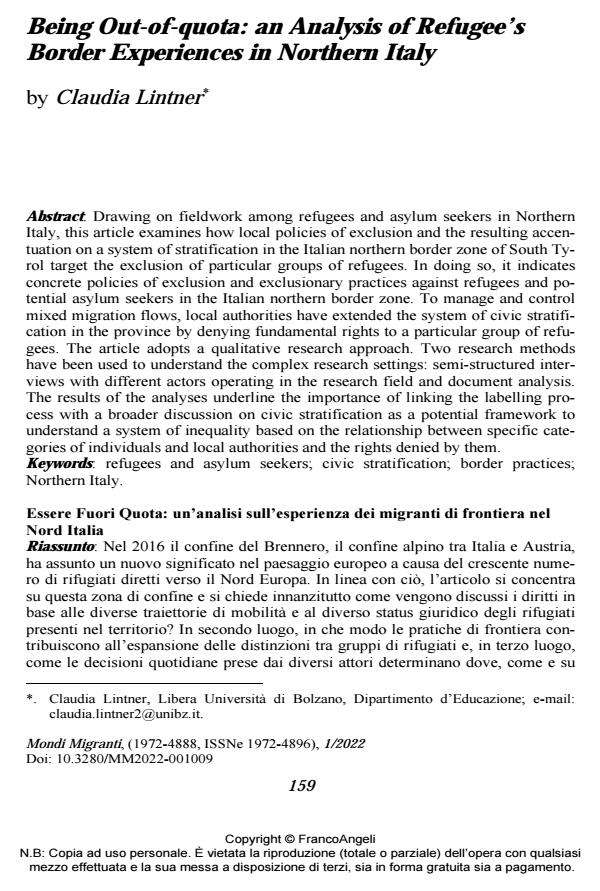Being Out-of-quota: an Analysis of Refugee’s Border Experiences in Northern Italy
Journal title MONDI MIGRANTI
Author/s Claudia Lintner
Publishing Year 2022 Issue 2022/1
Language English Pages 18 P. 159-176 File size 249 KB
DOI 10.3280/MM2022-001009
DOI is like a bar code for intellectual property: to have more infomation
click here
Below, you can see the article first page
If you want to buy this article in PDF format, you can do it, following the instructions to buy download credits

FrancoAngeli is member of Publishers International Linking Association, Inc (PILA), a not-for-profit association which run the CrossRef service enabling links to and from online scholarly content.
Drawing on fieldwork among refugees and asylum seekers in Northern Italy, this article examines how local policies of exclusion and the resulting accentuation on a system of stratification in the Italian northern border zone of South Tyrol target the exclusion of particular groups of refugees. In doing so, it indicates concrete policies of exclusion and exclusionary practices against refugees and potential asylum seekers in the Italian northern border zone. To manage and control mixed mi-gration flows, local authorities have extended the system of civic stratification in the province by denying fundamental rights to a particular group of refugees. The article adopts a qualitative research approach. Two research methods have been used to understand the complex research settings: semi-structured interviews with different actors operating in the research field and document analysis. The results of the analyses underline the importance of linking the labelling process with a broader discussion on civic stratification as a potential framework to understand a system of inequality based on the relationship between specific categories of individuals and local authorities and the rights denied by them.
Keywords: refugees and asylum seekers; civic stratification; border practices; Northern Italy.
Claudia Lintner, Being Out-of-quota: an Analysis of Refugee’s Border Experiences in Northern Italy in "MONDI MIGRANTI" 1/2022, pp 159-176, DOI: 10.3280/MM2022-001009